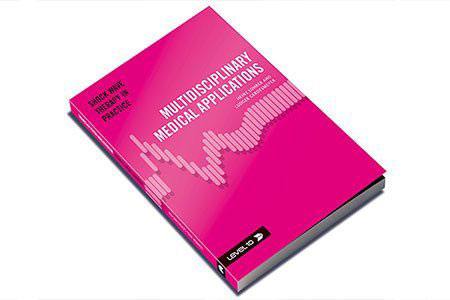From the book Multidisciplinary Medical Applications by Heinz Lohrer and Ludger Gerdesmeyer. Excerpts focus on using AWT to treat aesthetic disorders.
Abstract
This article shows how the results of different studies proofed the effectiveness and safety of acoustic pressure waves and lead to new indications. Today radial and planar/focused acoustic pressure waves are used for the treatment of numerous aesthetic disorders. Improvement of skin elasticity and wrinkles, smoothing, connective tissue tightening, fat mobilisation and mesolipolysis are additional applications.
Introduction
Acoustic Wave Therapy (AWT) originates from the acoustic pressure wave technology used successfully over 30 years in urology and other medical fields. The positive effects of acoustic pressure waves on the subcutaneous adipose tissue and skin texture were discovered by fortunate coincidence. During treatment with Extracorporeal Pulse Activation Technology (EPAT) the primary objective of the acoustic pressure wave treatment was to relax tensed muscles of the thigh, hip and/or iliotibial tract region. Since treatment was performed on relatively large body areas, radial acoustic pressure waves were the type of acoustic pressure wave primarily used for these applications. Besides pain relief and improvement in mobility achieved as a result of the shock wave therapy, some of the patients noticed a very pleasant additional effect. The skin surface on their thighs had become smoother and trousers fit better and felt looser. This phenomenon suggested a reduction of the circumference and less waviness of the surface in the treated areas.
Effects of acoustic pressure waves in the treatment of aesthetic conditions
The positive results of AWT in the treatment of aesthetic conditions is due to the following scientifically proved biological effects:
- stimulation of microcirculation (blood and lymphatic fluid);
- increase of cell wall permeability;
- release of Nitric oxide;
- anti-inflammatory effect;
- release of growth factors (VEGF, BMP, TGF etc.);
- stimulation of stem cells.
Moreover, low-energy acoustic pressure waves seem to stimulate the body’s self-healing forces by activating an immune reaction in such a way that stem cell migration, differentiation and proliferation occur. Overall, it can be said that AWT provides a highly successful treatment modality to stimulate tissue regeneration and healing. There is also evidence that AWT has a short-term analgesic and anti-inflammatory effect and provides long-term tissue regeneration.
Effects of AWT on Aesthetic Disorders
The main effect of AWT in treating connective tissue disorders is increased blood circulation. This effect breaks the vicious cycle of reduced blood/lymph microcirculation and increased fat accumulation. Compared to other treatment modalities, AWT offers a decisive advantage: it induces neoangiogenesis in the target area and this provides long-term treatment success. Tissue regeneration achieved by the application of acoustic pressure waves plays a major role.
Another effect produced by AWT is that the orange peel skin is smoothened by improving elasticity of the skin and the vertical connective tissue septa. Fibrotic tissue sections and nodules become softer or can be eliminated completely.
To learn more about this topic or for other AWT studies, please contact CuraMedix
Authors M. Adatto, K. Russe-Wilfingseder, K. Raegener, From Multidisciplinary Medical Applications by H. Lohrer and L. Gerdesmeyer



